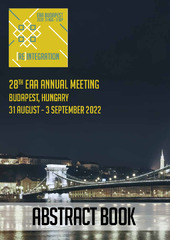Приказ основних података о документу
Typology vs. Technology: theoretical and methodological frameworks for studying tools in Serbian prehistoric archaeology
| dc.creator | Vitezović, Selena | |
| dc.date.accessioned | 2024-02-02T08:14:55Z | |
| dc.date.available | 2024-02-02T08:14:55Z | |
| dc.date.issued | 2022 | |
| dc.identifier.isbn | 978-80-88441-02-1 | |
| dc.identifier.uri | http://rai.ai.ac.rs/handle/123456789/1571 | |
| dc.description.abstract | Throughout the 20th century, Serbian prehistoric archaeology was preoccupied with problems related to the relative and absolute chronology, culture contacts and influences, studied predominantly through the analyses of pottery styles. Everyday tools, produced from lithic and osseous raw materials, were largely left aside, furthermore, lithic and osseous assemblages were often selectively collected during excavations. Bone industry was more affected because of the lack of systematic zooarchaeological analyses – broken tools, tools without conspicuous morphology and traces of use, manufacture debris, were often not recognised during field work and not collected. Even when collected and analysed, lithic and osseous assemblages were only briefly described in excavation reports, and simply classified into arbitrary morphological types. Within past two or three decades, the situation changed gradually, and an approach based on technology, widely adopted in other European archaeological traditions, began to be applied in Serbian prehistoric archaeology. The lithic artefacts were the first to gain more attention, and functional, technological criteria and raw materials were included in analyses, while the bone industry followed at somewhat slower pace. The technological approach is used more in the Neolithic archaeology, while assemblages from metal ages are still not sufficiently included in systematic researches. In this paper will be provided an overview of the history of research of tools from different materials, and approach based on the study of technological aspects will be discussed. The author in particular advocates the technological approach based on the works by French authors (including A. Leroi-Gourhan, P. Lemonnier – concepts of chaîne opératoire, technological systems, multiple technologies), but also with more recent theoretical frameworks included. | sr |
| dc.language.iso | en | sr |
| dc.publisher | Prague : European Association of Archaeologists | sr |
| dc.rights | openAccess | sr |
| dc.source | 28th EAA Annual Meeting (Budapest, Hungary, 31st Aug. – 3rd Sept. 2022) : Abstract Book | sr |
| dc.subject | prehistoric technology | sr |
| dc.subject | praistorijska arheologija | sr |
| dc.subject | praistorijska tehnologija | sr |
| dc.subject | history of research - archaeology | sr |
| dc.subject | praistorijska arheologija | sr |
| dc.title | Typology vs. Technology: theoretical and methodological frameworks for studying tools in Serbian prehistoric archaeology | sr |
| dc.type | conferenceObject | sr |
| dc.rights.license | ARR | sr |
| dc.citation.epage | 660 | |
| dc.citation.spage | 660 | |
| dc.description.other | [https://www.e-a-a.org/eaa2022/] [javascript://[Uploaded files/EAA 2022/EAA 2022 Abstract Book 27 August.pdf]] | sr |
| dc.identifier.fulltext | http://rai.ai.ac.rs/bitstream/id/4490/bitstream_4490.pdf | |
| dc.identifier.rcub | https://hdl.handle.net/21.15107/rcub_rai_1571 | |
| dc.type.version | publishedVersion | sr |


